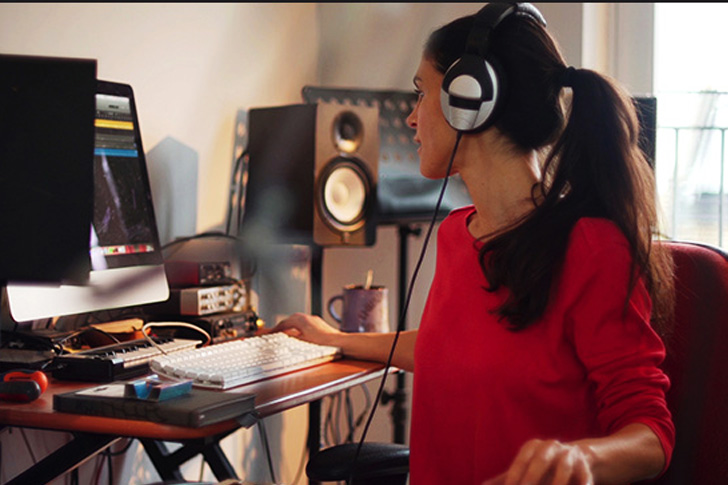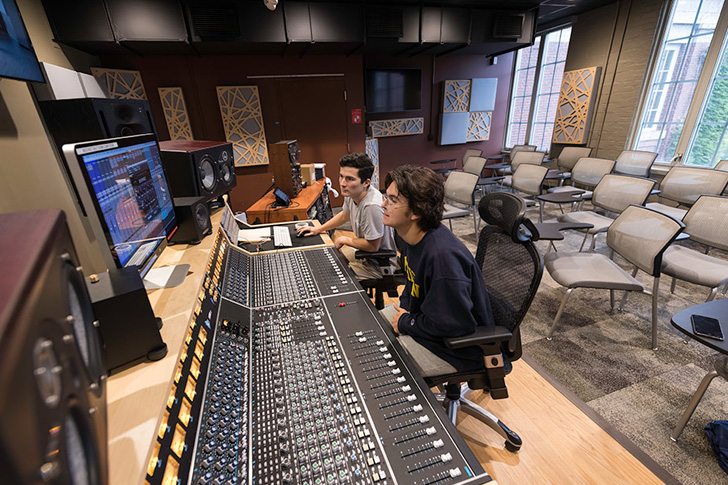The Six Steps To Music Production
Creating music is never an easy process. There are literally hundreds, if not thousands, of directions that you could take in producing good music. While that is mostly an advantage, it has its own challenges too. As the saying goes, just because you can, doesn’t mean you should. We know that that can be a tough rule to follow, especially in today’s musical climate where the theme seems to be “go big or go home.” However, you must keep in mind that good music does not necessarily translate to trendy music. Sure it’s good to keep things hip and up-to-date, but quality must come first, which means working just within the materials that work for your song. You don’t have to try every effect, every synth filler, add layers upon layers of beats and melodies, and you most definitely don’t need to amplify every bass line to its maximum degree. Nobody wants to put out mediocre art, and you’re not about to do that either. If you need a more detailed explanation about this whole process, then you should keep reading.
WRITING THE LYRICS

To a certain degree, writers have free reign over writing the lyrics to their songs. But the one thing they must always consider when weaving together words is the overall feel of the piece they’re writing. As a producer/songwriter, you’re responsible for matching the lyrics with the melodies of your pre-recorded tune. It’s not enough to have poetic lyrics. As a writer, you must make sure that the tune and words match each other perfectly. That’s step one.
ORGANIZING YOUR SONG

So you have your lyrics and your tune ready. What now? Now, you proceed to arrange your masterpiece. It’s not enough to simply slap on the lyrics with the song. That’s a one-way ticket to mediocrity. The key to producing catchy and good-quality music, according to experts, is to semi-polish your work in the arrangement process. Oddly enough, however, this is also the process many producers ignore. So if you want to make your investment and effort worth it, don’t skip this step.
CAPTURING THE PERFORMANCE

Now that you have your arrangement ready, it’s time to bring in the big gear. And by big gear we mean, the instruments that will help your song transform from a studio recording into a full-fledged performative track. This is a crucial step in the process simply because it allows you to see the song in its performative glory. So if you’re looking to up your production game, then maybe consider swiping your credit card to purchase some nice gear.
A BIT OF POLISHING

Editing is important. But according to experts, it should not be treated as a go-to, but rather, just as a fallback. The reason why you should avoid editing as much as possible is that it can get in the way of your creative expression. The trick here, as many professionals have stated, is to finish an entire track first and just go back to the areas you’d like to fix. Avoid editing your work while you are still in the process of creating it because it might just come out sounding too generic. And you definitely don’t want that to happen. What you want is for people to credit you for your artistry, so keep this one in mind.
SOUND MIXING

Now we’re down to the fifth step, mixing. For many artists, this is where all the fun begins. Basically, what sound mixing does is putting together all the bits and pieces you’ve created, so far, and turning into something cohesive. This is also when producers and song creators get creative with the sound effects, recordings, and instruments and put them together into a stereo 2-track mix. A lot of decision-making gets into this step since this process is where the final product comes out. So it’s probably a good idea to spend a bit of that investment money on mixing software since it really does help you achieve a good outcome.
MASTERING

Technically, mastering is no longer part of songwriting as it has more to do with putting together an entire album rather than just one track. However, it does have a huge degree of significance in the process of producing music. According to music professionals, “Mastering is the final step of audio post-production. The purpose of mastering is to balance sonic elements of a stereo mix and optimize playback across all systems and media formats.” In that regard, this is where all the sound engineers come in. With the help of mastering software and tools, these engineers help balance out the sound so that it can play smoothly across different mediums.
Based on materials from Waves.
